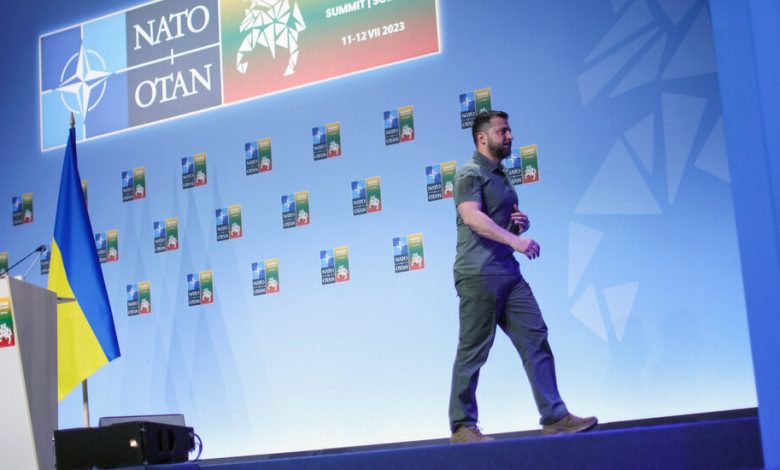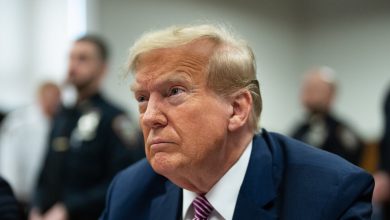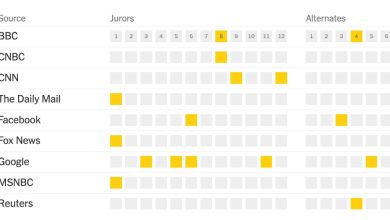Zelensky Returns From NATO Summit to Face Hard Realities of War

President Volodymyr Zelensky of Ukraine was traveling home on Thursday from the NATO summit, emphasizing success in his efforts to draw his country closer to the alliance, though without the firm timeline to join that he had demanded.
Having secured new pledges of weapons and reaffirmed security commitments from powerful Western allies, Mr. Zelensky nevertheless emerges from the two-day meeting with Ukraine in much the same position in the war.
Russian attack drones again targeted the capital overnight. Ukraine’s long-planned counteroffensive is making only incremental progress. And there was no official invitation to NATO, because some of its biggest members, including the United States, are leery of being drawn directly into battle with Russia.
After Mr. Zelensky complained about the “absurd” lack of a time frame for NATO membership, some Western officials at the summit in Lithuania appeared to take issue with his constant demands for aid, urging Ukrainian officials to show more “gratitude.” Mr. Zelensky modulated his tone after arriving at the summit, profusely thanking Western allies and praising NATO for its support.
As he departed Lithuania, he released a video message that appeared aimed at reassuring his war-weary nation that the trip had not been for nothing. “We have put to rest any doubts and ambiguities about whether Ukraine will be in NATO,” he said. “It will!”
The Ukrainian military’s Strategic Communications Department also posted a lengthy Twitter thread listing positive outcomes from the summit.
Mr. Zelensky’s messages, alternately cajoling and appreciative, reflected a time-tested strategy during the war and the difficult balancing act he faces after more than 16 months of Russian aggression. The Ukrainian leader has adopted a strategy of aiming high and asking often, in part apparently to show a war-weary domestic audience that he is pushing allies as hard as he can. In return, requests that were initially rebuffed — including Western battle tanks, missile systems, even training for F-16 fighter jets — have over time been met.
Mr. Zelensky did walk away from the summit with promises of long-range missiles from France, more tank ammunition from Germany and long-term commitments from NATO and the Group of 7 nations for security assistance.
“We are returning home with a good result for our country, and very importantly, for our warriors,” he said in a video he posted early Thursday morning.
But it was not immediately clear how soon those weapons would arrive, or how significant a boost they could provide for the Ukrainian military’s counteroffensive to reclaim territory in the country’s south and east. The campaign is in its second month, and Mr. Zelensky has acknowledged it is moving more slowly than some allies had hoped.
Kyiv’s forces have retaken some small farming villages in the Zaporizhzhia and Donetsk regions, but in recent weeks appear to have stalled in the face of deeply entrenched Russian forces.
Ukraine’s military on Thursday cited “gains in some places” — including around the eastern city of Bakhmut and the southern cities of Melitopol and Berdiansk — but said Russian forces were putting up “fierce resistance.”
The counteroffensive “is not going as well as Ukrainians hoped,” Michael Kofman, a senior fellow in the Russia and Eurasia Program at the Carnegie Endowment for International Peace, said this week on the “War on the Rocks” podcast.
Mr. Kofman said that it appeared that Kyiv’s troops — impeded by minefields, Russian helicopter attacks and deep defensive lines — have shifted to a strategy of trying to wear down Moscow’s combat capacity through attrition. But he warned that Ukraine may not hold a significant advantage in that type of strategy against the more numerous Russian forces.
The Biden administration has acknowledged that Kyiv’s forces are running low on ammunition in its counteroffensive. That is one reason Mr. Biden agreed last week to send Ukraine cluster munitions that are highly dangerous for civilians and are outlawed by all but a few countries, including the United States, Russia and Ukraine.
Ukraine has also been asking the United States for long-range Army Tactical Missile Systems, known as ATACMS, which have a range of about 190 miles — about 40 miles more than the missiles France and Britain are providing. American and European officials have said that the Biden administration, after months of saying it would not provide the weapons for fear of further provoking Russia, is considering whether to send a few to Kyiv.
Matthew Mpoke Bigg contributed reporting.




